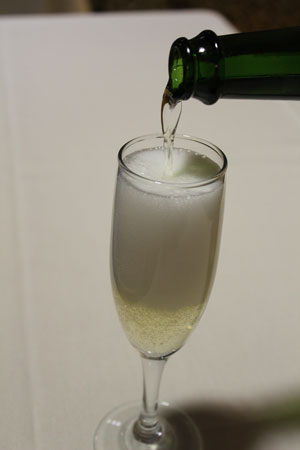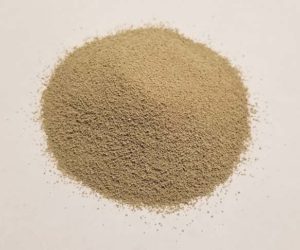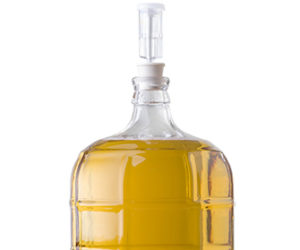Q
I am having trouble making my wines into sparkling wines. Recently I fermented a cranberry wine from a juice that had an 11% ABV at the end of fermentation. I racked and added a campden tablet and let it clear. Once clear, I transferred to Champagne bottles with yeast and sugar. After a week I opened the bottle and it was totally flat! I’m not sure what I’m doing wrong here. Any help would be appreciated.
Tom Egelhoff
Boca Raton, Florida
A
Fermentation by itself is tricky but secondary fermentations for sparkling wines are especially so because your new yeast must fight against existing alcohol (which is toxic to yeast), depleted nutrition, and potentially toxic (to the yeast) compounds left behind as the primary yeast died out. To maximize your chances of a successful in-the-bottle fermentation you need to prepare a starter culture, let that ferment to 0 °Brix and then immediately distribute that amongst your chaptalized base wine. The “active but acclimated” yeast will then hopefully ferment the residual sugar in your closed-up bottles, creating the fizz you’re looking for.
From what you write it seems like you were directly adding yeast to finished, sweetened wine. Since that would be shocking the new yeast quite a bit, it might serve you better next time to get a dry (but still active) starter culture first, then inoculate. Even if you follow those steps, there are still many things that can delay, slow down, or even prevent a secondary fermentation from happening where and when you want it to. To help you troubleshoot the many issues, here are some possible causes as well as suggested remedies for a failure to re-ferment.
Temperature too cold: All wines like to ferment above 50 °F (10 °C) so be sure your bottles are being stored above this temperature, and preferably at least 60 °F (16 °C).
Not enough nutrition: The first fermentation might have depleted all of the minerals and nutrients in your must, especially if you started with a fruit wine like cranberry, which doesn’t carry as balanced an initial mix as grape juice or must. You might want to add a little yeast nutrient (DAP is better than nothing, but a mixed nutrient would be best) to your wine at a low dose (perhaps 1⁄4 of what you would add for primary) to make sure the new yeast have something to boost them.
High alcohol: Alcohol is actually toxic to yeast; it makes their cell walls permeable. High levels (over 15%) will almost immediately kill off many yeast strains. Re-check analysis numbers on the base wine to make sure you’re not dealing with a high-alcohol situation.
pH too low/acid too high: A pH below 3.30 can inhibit yeast growth. Check acid levels on the base wine and try deacidification with potassium carbonate or potassium bicarbonate if needed. Try to shoot for a titratable acidity below 8.0 g/L.
Too much residual sulfur dioxide: Most yeast strains are sensitive to free sulfur dioxide over 15–20 ppm. Check free sulfur dioxide (FSO2) on the finished wine to make sure too much wasn’t added.
Yeast used for secondary inoculation not the right strain: Be sure to use a “strong” fermenter recommended for secondary fermentations. Some yeast strains are very sensitive to alcohol and sulfur dioxide. The good ol’ “Prise de Mousse” and EC-1118 will work but there are other strains like “K1” that are especially good in secondary fermentation environments. Generally, any yeast advertised as working well for re-starting stuck fermentations will be alcohol- and sulfur dioxide-tolerant, but be sure to match your yeast to your base wine’s alcohol level. You could also try the new “ProElif” encapsulated yeast from Scott Laboratories, which I have heard works for sparkling wines.
Correct yeast strain but culture not active: Be sure to “proof” yeast before pitching to make sure it’s active and robust. Do not use this particular batch if you don’t see a lot of activity. Try a new packet or try a new strain.
Correct yeast strain, active culture but pitched incorrectly: When introducing new yeast into a “compromised” environment of a finished primary wine (high alcohol, possible toxic yeast by-products from first fermentation), it’s important to really acclimate the new yeast well. Try feeding the active yeast small but increasingly large bits of the primary wine, perhaps waiting around 15–20 minutes and checking for activity after each addition before inoculating every bottle in the batch.
Keep in mind that a combination of the above factors could be your fermentation-limiting problem. For example a high alcohol, low pH, and low nutrient wine will be especially difficult to get through a secondary yeast fermentation. I hope this list of factors can help you troubleshoot what could be keeping you from your ideal sparkling wine.
Q
Can I, or should I, re-rack my nine bottles of fresh-picked blackberry wine due to settling sediment? I do have the wine bottles with the pointed raised centers. Any help would be most useful.
Joe Bramble
Greenwood, Indiana
A
It can be wrenching for a winemaker to look at his or her bottles developing a sediment over time. Many fruits, especially those high in pectin, proteins, or phenols are especially prone to sedimentation during aging. It’s often just too hard to wait long enough for everything to precipitate out of solution (months, sometimes years) before bottling. While we can attack and pre-empt a lot of post-bottle sediment with fining during the bulk-aging process, it’s not always a guarantee of future behavior. Add in a pectin-rich fruit like blackberry and indeed sediment over time is going to be more likely.
Should you open up your precious nine bottles, pour the clearer wine off the sediment and re-bottle? I would say it depends on how soon you are anticipating enjoying your bottles. If you’re going to serve them all at a big party next week I would say go ahead and decant and re-cork. Then you can proudly serve them with no visual issues or (gasp) globs of gooey gunk in your guests’ glasses.
On the contrary, if this is a wine you only open once a year, I would perhaps do one bottle now and wait to see how it keeps aging in another month or two. You see, every time you open a bottle of wine you’re exposing it to air and ambient organisms like the yeast and bacteria that float around in our everyday environment. If there is any residual sugar in your wine you’re risking inoculating and starting a possible refermentation, which could leave you with even worse sediment than before!
Since most sediments are just visual problems, I recommend decanting shortly before serving. That way you can enjoy your wine at its freshest, with no risk of refermentation or spoilage before enjoying.
Q
Last year I made a rosé from Marquette. At the time of fermentation, the juice was pH 3.33 and TA 10.0 g/L. I decided to ferment the juice even though the acid was a little high. After fermentation, the color of the rosé was great and very clear. The nose was a beautiful strawberry. Unfortunately, the wine was too crisp because the acid was too high. I decided to reduce the acidity with potassium bicarbonate. I conducted some bench trials and decided to use half of what I thought would be the right amount. The addition was conducted and the wine became cloudy. This was fixed by using Sparkolloid. In preparation for this fall, I am assuming the Marquette juice will still have a higher titratable acidity (TA) than I want. I want to shoot for a TA around 7.0 g/L or less and would prefer to do as little as possible to the wine after fermentation. Does it make sense to test the juice and adjust the acidity of the juice prior to fermentation? Do you still recommend potassium bicarbonate to decrease the acidity? Finally, do you recommend I cold stabilize the rosé prior to bottling?
Bill Thompson
Andover, Minnesota
A
That’s great that you are already planning ahead for this upcoming harvest. Indeed, a TA of 10.0 g/L is very high and I would certainly plan on de-acidifying for style as well as to facilitate fermentation. As with just about any major adjustment you’ll make to a wine, the earlier you do it the better. If you can’t do it in the grape phase (which Mother Nature really controls) definitely do it in the juice phase. Be careful if you use calcium carbonate, which can cause a calcium tartrate instability. Since you’re probably only going to be taking the TA down by 2-3 g/L I would say go ahead and use potassium bicarbonate again.
De-acidifying wine is a multi-step process with many things to be taken into account. One of the best articles I’ve read about the details and chemistry behind the procedure was written by my friend Dr. Jim Harbertson at Washington State University. He offers a great rundown with links to handy additive calculators in his article “Managing High Acidity in Grape Must and Wine” (http://wine.wsu.edu/research-extension/2010/10/managing-high-acidity/).
Rosé wines can be tricky and I do not recommend you let the wine go through malolactic fermentation. I tried this one year on a pink wine and found that it lost quite a lot of its color and turned orange. Don’t forget that reducing acidity will also tend to shift color from the red/blue hues to orange-ish. Many of my winemaking friends have similar cautions about letting rosé wines go through malolactic fermentation. I do certainly suggest you try to do some kind of cold stabilization prior to bottle to reduce or eliminate potassium bitartrate crystal precipitation.






